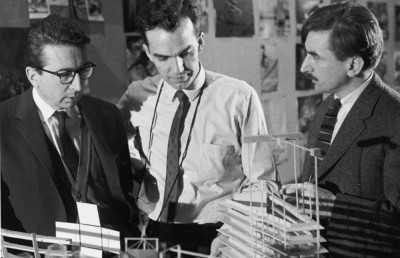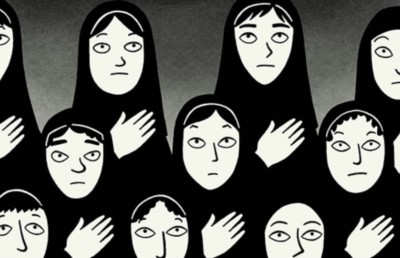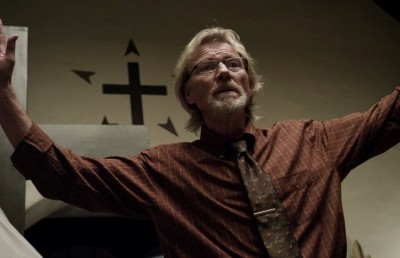No Texting, No Talking: VIFF 2011

Three hundred and eighty six films, six hundred and thirty-three public screenings, eighty different countries. While journalists and professional cinephiles trudge to Cannes every year, only to come back with jaded complaints and dismissals, I stay right here at home and take in The Vancouver International Film Festival – a more comprehensive, just as cinephilic, media-frenzy-free orgy of big-screen wonders. I should be careful with my boosterism: I have to disclose that I work for VIFF every year, both as a program guide writer for the Canadian Images section and, even less spectacularly, as a ticket salesperson for the festival’s phone line. In 2011 I worked the phones full time, which put a big crimp in my movie going: not counting the Canadian films I screened for work (and which I won’t write about out of propriety), I saw only about fifteen movies over the course of the festival’s two and a half weeks. Theatrical viewing is declining for casual moviegoers, fan boys and genuine cinephiles alike, but VIFF had a record sales year, and I went to lots of packed screenings. Here are some of the best (off-screen) things about VIFF: the relatively inexpensive tickets; the exquisite balance that results in busy houses but few total sellouts; the lack of industry whoring and celebrity-spotting distractions; the Dragons and Tigers section, showcasing East and Southeast Asian films most people would otherwise never get a chance to see on the big screen (or, indeed, at all); the dedicated emphasis on international art cinema (programmers include Tony Rayns, Mark Peranson and Shelly Kraicer); and, perhaps above all else, the lack of texting, phone flashing and talking during screenings. Along with poor projection (in the theatres that still bother with 35mm); “pre-show” bombardments of advertising for 20 minutes before the lights even do down; and overpriced tickets and concession, one of the worst things about going to the movies these days is the mobile device plague. I’m sick of leaning forward to tell people to turn off their phones and stop texting during films, so it’s wonderful that at VIFF the staff do it for me. Before every film shown patrons are politely but firmly warned to refrain from these odious practices, and it mostly works, thank God. I had no disturbances to my viewing this year, unless you count the woman who sat next to me at one screening who smelled like canned cat food (enjoyed the movie anyway). Of the films I saw this year, it broke about half and half between the good and the bad. Since I hate writing pans, I’ll stick to the positive side of the ledger. Here are the best movies I saw at this year’s fest:
It’s fascinating to chart the changes in the gangster movie since it came into its own in the early 30s: from those days’ emphasis on individualistic mythology through the 50s’ and 60s’ view of organized crime as a clandestine, business-like network through the intimate personalization of the mobster that started mythologically with The Godfather (Francis Ford Coppola, 1972), continued satirically with Goodfellas (Martin Scorsese, 1990) and culminated in The Sopranos (David Chase, 1999-2007). I’ve never read anyone make the connection before, but it seems to me that Quentin Tarantino is the essential link between Scorsese’s and Chase’s projects: he took the facetiousness of Scorsese’s film and added a further (borrowed, of course) emphasis on the diminishingly quotidian. Gangsters used to be larger than life dynamos who shot to the top and made millions; now they are petit-bourgeois stiffs who deal with digestive problems while planning low-level murders and robberies. Ben Wheatley’s superb Kill List is fully Tarantino/Chase: we’re privileged not only to the murderous intrigues of its hit man protagonist but also his fraught, often brutal family life and his petty personal anxieties. There’s no outsized gangster mythology here; Wheatley and his team replace it with scrupulous realism. So far, so typical of these days, but as the film progresses another type of mythology comes into play: that of films like…The Wicker Man (Robin Hardy, 1973). That’s right, this movie mixes post-Tarantino gangster minutiae, British naturalism and Gothic horror tropes. The combination sounds absurd, and it is, in the best sense of the word: the mash-up gives the movie the realism of waking life and the lucid outrageousness of nightmares, with the semi-escapism of crime intrigue a bridge between the two poles.
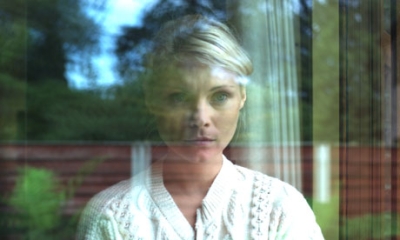
Kill List starts with some naturalistic domestic strife, as Neil Maskell’s Jay, a Special Ops-type soldier returned to Britain from some brutal but unspecified actions in Kiev, quarrels with his wife in their blandly middle class suburban home. There are intimations of Post-Traumatic Stress Disorder in the dialogue, as well as serious financial hardship. His military buddy Gal (Michael Smiley) coaxes him, out of sympathy and opportunism, into taking on some work that they’ve done in the past: domestic killing for hire. They’re commissioned by a mysterious cartel to rub out a handful of seemingly random men. The Gothic tropes are introduced early in the film in semi-recognizable form: Jay has Gal and a date over for dinner to his house, and as Gal and Jay close the hit man deal in the garage, the date, Fiona (Emma Fryer), visits the upstairs bathroom and scratches a pagan symbol onto the back of mirror. No movie moment I saw this year was as compellingly mysterious and suspense-generating as this one: the action is both pointed and oblique, telling us to be very afraid while giving us no idea what to be afraid of.
The subsequent plot is formatted into human items on the “kill list,” with the psychological volatility of Jay chafing against the rigours of the assignment and the genre tropes chafing against the demands of character study. The behavioural looseness of the post-Kitchen Sink acting and dialogue combines with the strictures of genre storytelling like an AC/DC current, giving the film an amazing charge. And when the Gothic tropes start to bleed into the forefront, the movie stays thrillingly on the rails, with every element working in tandem but each threatening to overwhelm the others. Eventually horror wins out, in a conclusion both shocking and retrospectively predictable. When the film whittled itself down to its ending, I realized there was nothing onscreen that hadn’t been present, in some form or another, in the first domestic scene. I should have seen where Kill List was going all along, but I was too thrilled and appalled to think much about it.
Wheatley and his team have their eye on bigger game than just genre thrills, though. Jay is a case study in the psychology of the warrior in a capitalist society where war has been displaced. His poverty and near-obsolescence make him desperate, while his violent nature and psychological scars make him unable to suppress his anger in a more or less peaceful country. (Watch and wince at what he does with a hammer.) Faced with a kill list of pedophiles and child pornographers, he’s unable to contain his moralism even as he commits immoral acts. Like most of us, he’s a failed compartmentalizer. He tries to keep his violence under control in a society that trains and needs him to commit it—as long as it’s overseas. He can’t control his rage, and so others—who are likened to a corporate entity—do it for him. The movie is a pretty sharp demonstration of the notion that violent action equals a loss of power as much as the fulfillment of it.
Like most good style mash-ups, Kill List is self-reflexive in its crossbreeding. It asserts the power of genre escapism by positing it as the disillusionment of naturalism instead of the more common, “revisionist” opposite. The real-seeming aspects of the film are overwhelmed by its horror tropes, with the quotidian being turned into the fantastic as a form of political tragedy. Nicolas Wending Refn’s Drive, which I saw just after the festival, does something similar, but that film is ultimately a fluffy dream: the “real-life” ambitions of its characters come to naught, but that fails to register as tragic because the filmmakers don’t much believe in them. The makers of Kill List show a solid dedication to all the antithetical elements in their film: “reality” and genre are given equal respect. That’s why it actually seems to matter when the latter overwhelms the former: unlike Drive, Wheatley’s film actually gives you something to mourn the loss of.
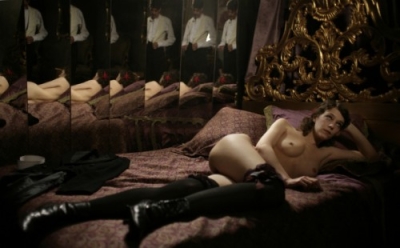
“It lets the viewer decide” is a cliché, most often used dishonestly or inaccurately in regards to movies with “challenging” subject matter. I’ve grown wary of using this discourse to describe films, and feel a bit embarrassed to have to apply it to Bertrand Bonnello’s superb ??House of Tolerance??— or at least to most of its running time. This very episodic film about a late 19th-early 20th century Parisian brothel features sensuous shots of full frontal nudity, sexual-hygienic ministrations, facial mutilation, breasts and butts galore, and kinky sex enactments. If this were an American film, the detailed eroticism would probably be shot through with ambivalence—a whiplash of prurience and judgement, voyeurism and shame. Bonnello doesn’t front on the horror and degradation involved in the sex trade, but his attitude is consistent, at least scene for scene: he doesn’t judge. The sumptuous beauty that he applies to every scene except, tellingly, the last, has an equalizing quality. The director treats degradation and beauty with the same tone, implying their connection in the context of sexuality and, even more courageously, his own voyeuristic het-male complicity in that dynamic.
“Not judging” is something that defenders of indie American auteurs like Todd Solondz and Larry Clark hold up as a badge of pride, but I’ve never bought it. The disgust that those two filmmakers solicit with such laughable over-eagerness puts the lie to the claims of moral maturity made for their work. But the only judgement Bonnello makes, with his camera, at least, is that what he’s showing us is gorgeous; when a more-or-less clear moral statement emerges at the film’s end, his protest is framed—down to the choice of image format—as one against ugliness. The burnished cinematography and matter-of-fact storytelling of the rest of the film spell out tonal neutrality and sensuous indulgence. If that’s somehow contradictory, the director doesn’t seem to care: he’s comfortable with his ambivalence, and willing to indulge it. The horrors in the film sit side by side with scenes of comradeship, platonic and sexual love, and happiness. House of Tolerance evokes the alternations between contentment, resignation, bliss, hardship and misery that I assume make up most peoples’ lives. It doesn’t impose a clear idea of what prostitution means overall, but it has plenty to say about what it means minute to minute, day to day, client to client. Sometimes it means fun, sometimes it means pain, sometimes it means boredom, sometimes it means money.
The movie’s narrative is fragmented and the languorous pace consistent; these and the constancy of the cinematography give it a feeling of pleasant monotony that makes the closing disruption all the more heartbreaking. The characters are viewed either in obtrusively framed tableaux, in willful episodes of sensuously show camera tracking, or in indulgent but fragmenting close-ups and two-shots. The style is not exactly classical and not exactly “contemplative.” Bonnello does shot-reverse-shot for conversation, but only sometimes, and often with long takes and lots of off-screen space and sound. Every commitment of focus is also an admission of loss: more than most films, House of Tolerance expresses the sense that to look at one thing is to ignore something else. The narrative is wide-ranging and the gaze is intense; the synthesis of those facts is the sense that every decision is, in part, an act of extreme partiality—love and neglect are two sides of the same coin. The director knows he can’t wrap his mind or his gaze around it all, and he doesn’t try to. The film is a self-consciously impressionistic ode to what its maker finds beautiful in women, pathetic in men (including, presumably, himself), and joyful and sad in life. I loved this movie more than anything I saw at VIFF ’11: I loved its aura of sad resignation, its narcotic pacing, the delicate gradations between shadow and clarity of its cinematography and, most of all, its Frenchness. By that I guess I mean the lucidity softened by delicate stylistic beauty and the lack of tortured moralism. The American thing to do would be to alternate beauty and horror. What Bonnello does is much more interesting, much more provocative, much more sexy: he combines the two. And I’ll treasure the movie for containing the best line of dialogue I’ve heard in years. In the voiceover reading of a letter to a syphilitic prostitute he’s choosing to abandon, a john, played by soft and plump old Jacques Nolot, says “Men have secrets but no mystery.” The penetrating, seemingly throwaway acuity; the lighthearted resignation; the casual but totalizing self-indictment—it’s perfect.

Kim Kyung-Mook’s shocking debut, Faceless Things (2006), consists of one very long static DV take, followed by one shorter-but-still-lengthy handheld camcorder take (with superimposed animation) and another, very brief, static take as a coda. It’s as formally audacious a feature as has ever been made, but it isn’t exactly technically virtuosic. A lot of the East Asian films that Tony Rayns programs for the Dragons and Tigers section of VIFF are early works from young, scrappy filmmakers with more inspiration than professionalism, and the inspiration carries them almost every time. Stateless Things, Kim’s third film, is just as inspired as his first, but it displays a major technical advance, if that’s the right phrase. The camera movement is masterfully precise without sacrificing fluidity; there is, especially in the first part of the movie, frequent, seemingly casual mobility that somehow hits the mark every time. We’re always sure of what to look at, whether it’s central in the frame or not−the guidance of the eye is exquisite. Later on the film becomes more static in general, and what kinetic moments there are become willful flourishes, though never too editorialized in terms of theme. They stick out not as factitious, but as the mark of a filmmaker’s capricious passion for his material.
This passion –when it’s expressed in the visual flourishes as opposed to the searing drama– entails some distance. In a conventional fiction feature the sudden ruptures –like a long lateral tracking shot along a street that interrupts the narrative and has no obvious counterpart in the rest of the movie– would seem inappropriate. Aestheticized distance relates to Kim’s conception of his characters as symbolic–and therefore plastic– beings as much as flesh-and-blood humans. The main characters are Jun (Paul Lee), an economically oppressed immigrant from the North to South Korea, and Hyeon (Yeom Hyun-Joon), a kept boy for a married sugar-daddy. Both live in states of exploitation, economic dependence and emotional isolation. The film is roughly split into halves, focusing on each respective character; when we finally meet the two together, they’re attempting to commit suicide, having found each other on a chat room. The characters’ quasi-doppelganger relation to each other is as much a matter of narrative construction and thematic similarity as it is of characterization; Kim posits them as two halves of a whole sundered by social injustice and existential instability –in other words, plain old life for most people on this planet. He’s able to conceive of them both tragically (in realist terms) and more optimistically (in more experimental terms, as defiant symbols.)
At the film’s end Kim violates the most basic dramatic principles of conventional filmmaking in order to “save” his characters; tragedy wins out in our realization that this supernatural unification of the kids –which turns one life saved into two lives saved– is only possible in fiction, whereas most of the film’s story is eminently plausible as real life. The filmmaker’s exercise of his fantasy prerogative is implicitly despairing: the distancing visual flourishes that pepper the film (never compromising its heartbreaking power) let us read the last-minute save not as a diegetic, supernatural miracle but as the stroke of the author’s pen in all its limited, glorious power. In real life, we know, there are kids like this. In real life, we know, they often lose. Kim isn’t a solid Brechtian: he creates enough drama to make for an agonizing counterweight to the formalized alienation. The dynamic of conventional drama and anti-realist assertion mirrors that of the state of rupture Kim alludes to repeatedly. He opens up a split between the social reality he’s inspired by and what he desperately wishes he could do about it.
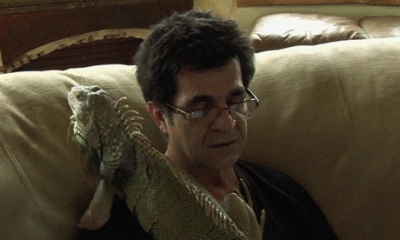
Cinema is increasingly a private experience, and cinephilia has shrunk in parallel. The proliferation of esoteric films on DVD, Blu Ray, and as illegal downloads is wonderful in some ways, but what’s missing from the experience is the emotional communion and outsized vitality of seeing a film with a diverse audience. There are few better feelings than that of sensing a connection of joy and appreciation among strangers in a theatre –people of different sensibilities, politics, and levels of cultural acumen meeting before a work of art and responding together. I got an intense dose of this feeling this year at VIFF, when Jafar Panahi’s This Is Not A Film played in a rented commercial multiplex theatre and rocked the house.
Sometimes I feel nostalgic for a time when I wasn’t even born: the 60s and 70s, when audiences turned out in large numbers for theatrical screenings of European, American, Japanese and Latin American movies. That North American culture, with its possibility of a porous sense of (non-virtual) community, is almost gone, and there are now rigid barriers standing between cinephilic and non-cinephilic moviegoers. It’s a situation that VIFF tends to challenge: we get packed screenings for films like 2010’s I Wish I Knew (Jia Zhangke) and 2011’s Elena (Andrei Zvyagintsev), and it’s certainly not just cinephiles in the seats: there aren’t enough of us here to fill them.
The notion that radical art cinema can’t be popular is belied every year at VIFF, and a big reason for this, I think, is Vancouver’s ethnic mix. East Asian, Eastern European, and Iranian audiences turn out in droves to see their cultures represented on the big screen in a way that Hollywood and its media enablers don’t allow. Three of the biggest sellers at VIFF ’11 were the Taiwanese epic Seediq Bale: Warriors of the Rainbow (Te-Sheng Wei), Iran’s A Separation (Asghar Farhadi), and Ann Hui’s A Simple Life. All three sold out quickly; I had customers on the phone who were crestfallen at hearing about a lack of tickets, enquiring about repeat screenings, desperate to see these movies on the big screen. It was heartening for me, a cinephile who yearns for crossover without compromise, for artistic multiculturalism, for an alternative to the dynamic of mutual hostility and presumption that divides elitism and populism in contemporary film culture.
This Is Not A Film was packed at the first screening I attended, and when the end credits went up on the screen the applause was raucous. So far, so good, but when titles reading “For Iranian filmmakers” came onscreen, the crowd went nuts –it’s now one of my favourite movie going memories. Panahi and Mojtaba Mirtahmasb’s work served as a validation on several levels: of the communal experience of theatregoing, of the power of transcultural communication, of the spirit of political resistance, of the power of radical cinema to reach out and touch masses of people. That’s a lot to put on the shoulders of two filmmakers, brave as they are, but their film –and it is a film—can support it; I would argue that it seeks nothing less than to do so.
The moral clarity of the film and the political restrictions that led to its making facilitate its aesthetic complexity and, possibly, allow that complexity to translate to a wider audience than is usual for radical art cinema. Panahi’s moral and political position is so uncontroversial, and the unjust restrictions he faces so manifest, that he doesn’t have to make his case verbally –indeed, he can’t. Given that, at the time of filming, he’s under house arrest and facing a prison sentence, a travel ban, and a twenty year ban from making movies, all he has to do is make the case indirectly. Every non-obeisant move he makes in front of a camera is a radical act, which makes This Is Not a Film one of the best demonstrations of the power of the state ever made. Maybe it takes a political situation as repressive as that of contemporary Iran to make the personal political to the extent that Godard, Fassbinder and so many others desired.
The film is essentially a day in the life of Panahi. It starts with him in his boxers checking his answering machine in the morning and continues through breakfast and a conversation with his lawyer, his discussion of some of his films (made and unmade), a bit of populist self-reflexivity with him and Mirtahmasb aiming cameras at each other, and a journey to the end of his legal boundaries—the garage of his apartment building. In one of the most poignant moments of the film, Panahi produces a script he never got to film, blocks out the space of a scene from it with masking tape on his carpet, and gives us some exposition of the script before choking up and saying “If you can tell a film, why make it?” The answer is that he can’t make the film, so he has to tell it. He feels like the decision is his emotionally, even though he wasn’t able to make it for himself in the exterior world. His consciousness is outstripping his reality, and it’s breaking his heart. This is one of the most effective portrayals−concise and suggestive, poetic and practical−of the effect of political repression on the mind of the artist.
It has to be acknowledged that This Is Not a Film is, on one level, pretty disingenuous. It presents itself as a straight documentary, but there’s a felicity to the editing and events that strongly suggests some contrivance. On the surface it’s truth, beneath the surface truth is manipulation, and beneath the manipulation is truth once again: the filmmakers have to be disingenuous in order to defy persecution, and this sneakiness testifies to the constricted reality of their situation, manifesting it in itself. The foundation of the Iranian film project inaugurated by Kiarostami and later-period Makhmalbaf is the strategy of using artifice and reality to redeem each other, and This Is Not a Film presents this strategy in its most tangible, necessary form yet. It may seem like some horrible kind of felicity to Panahi that the mixtures of documentary and fiction techniques he employed in his earlier films are now a necessity.
The film ends, after a hilarious bit with a belligerent little dog named Mickey, with Panahi taking up the camera himself and going down the elevator with a neighbour’s relative as he collects trash from the other apartments. The last person we see is this man, who engages Panahi in casual conversation, his bemusement at being filmed never less than clear. Panahi is shooting again—not a film, but part of what’s to become a film—and the realist populism of this casual endeavour seems accidental even as it synchs up with everything he’s done so far as a professional filmmaker. The subject is addressing the camera, behind which is another subject, who is creating work within a work –never has self-reflexivity been this seemingly offhand, this playful, this accessible in its implications without being insulting. I can’t spoil what happens after the elevator ride, except to say that it’s tragic yet hopeful, abrupt yet so synchronous with the rest of the filmmakers’ project that it had to be at least somewhat contrived. Panahi and Mirtahmasb have made the ultimate political film, one in which the stakes are as high behind the camera as in front of it.
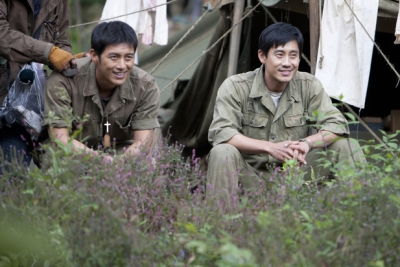
One resolution I made for the 2011 fest was to see more mainstream-style foreign films. My reasoning was that I had as little chance of seeing such movies again on the big screen as I did more esoteric fare from places like Korea and Japan, and my resolution paid off, big time, with two East Asian films in the always-awesome Dragons and Tigers section. Hun Jang’s The Front Line was the first of these, and I saw it in less than ideal conditions. The screening was in Empire Theatres’ Granville 7 multiplex, the main venue for VIFF. There were technical difficulties with either the projector or the digital video package so, after a long and frustrating delay, the staff bit the bullet and decided to show the industry screener—poor image quality, watermark and all. I thought about bailing, but I wasn’t sure there would be another chance for me to see the film, and I was dead in the middle of a crowded row in a packed house. So I stayed, and the film blew my mind.
One of the interesting things I’ve noticed about the South Korean movie renaissance is the flexible treatment of stars. Hollywood has enough talent, and a big enough number of productions, to be able to create a star system wherein many actors are able to have huge careers without having to do radically different roles. Hollywood tends to favour consistency over flexibility with its big-name actors, and even a lot of its smaller ones –look at what’s happening with Michael Shannon. It’s rare that I see a Hollywood actor successfully, radically transform himself from one role to another. But look at Bin Won, from hyperbolically feeble man-child in Mother (Bong Joon-ho, 2009) to sleek, macho killing machine in The Man From Nowhere (Jeong-Beom Lee, 2010). It’s thrilling to see movie actors show the power to assume iconic stature and the professional humility to leave it behind. This year I was shocked to read, after seeing the film, that the star of The Front Line, Ha-Kyun Shin, was also the star of Save The Green Planet (Joon-Hwang Jang, 2003). I certainly didn’t recognize him, and Green Planet is certainly a movie that’s –unfortunately– burned into my memory. In that film, he played a wincing, borderline psychotic nerd writhing in life-long humiliation; in this latest film he plays a fully adult, relatively stoic soldier. The Front Line is set during the Korean War; at the beginning Shin’s character, soldier Kang, is assigned to military intelligence for the forces of the South. His superiors have received intelligence indicating possibly treasonous communication between members of a platoon near the main line of battle and their counterparts on the enemy side. Kang is to join the platoon as a soldier and root out the possible traitors. The mystery of the communications is solved, if I remember right, about hallway through the film, in a revelation with poetic and political implications. Kang is intelligent, moral, reserved, upright: an embodiment of the conservative masculine ideal. But The Front Line??’s political discourse is liberal, recalling the trans-national humanism of Renoir’s ??Grand Illusion (1937) with the twist that the institutions at war are –or were– compatriots.
Shin pulls off his performance without the self-conscious mugging of his turn in Planet; it’s a wonderful professionalism that allows him to change not only types of roles, but types of acting styles. He acts the role here without feeling that he has to inhabit it, and the other actors do the same, giving detailed but not narcissistic performances of their heavily typed characters. The graphic casting and the symbolic requirements of the script pre-empt any Sean Penn-style indulgence; the cast subsume themselves admirably and are almost uniformly excellent. This is an old-fashioned movie; viewers old or educated enough to have a grasp on our movie past can see many of the old virtues come into play: delayed narrative resonance, with seeds planted in the story for a later payoff; legible story continuity, with every element a subordinate part of a complex, coherent whole; and, best of all, direction that respects the power of the face while stressing the settings and actions that generate human response. Contemporary Hollywood style ruins the power of the face by over-prioritizing it, discarding setting and clear complexity of movement in favour of endless, boring one- and two-shots and even blowing those with too much cutting. In The Front Line, the face is focused on in beautiful interaction with the surrounding environment, and held on long enough to foreclose any sense of disposability.
The movie has a strong but never oppressive sense of moral urgency. Its theme of solidarity beyond battle lines goes down easy by being subsumed in narrative metaphor: the secret of those mysterious letters, growing out of a slowly built bond between enemy platoons forced to capture and re-capture the same useless hill on the front line. The enemy soldiers take to burying food for each other in a cave on the hill, and this eventually leads to each side using the other as a sort of mail service, posting letters from communist soldiers to their family members in the south and vice versa. It’s a metaphor that’s plausible in its story origin, with a compact resonance on multiple levels. It puts the large-scale military absurdity in dramatic, small-scale terms –there’s no forced imposition of intimate contexts on the larger politics or vice versa, as there is in most contemporary “issue-oriented” Hollywood blockbusters. The discourse of common humanity over ideological differences can seem dubious in light of the radical differences that now exist between North and South Korea, but less so when you look at the film out of its national context –and it’s clearly a film that owes a lot to international models, from Grand Illusion to The Big Red One (Samuel Fuller, 1980) to Hell Is For Heroes (Don Siegel, 1962). There are many war movie tropes here: Kang’s surprising and comical revelation of who’s actually in charge of the platoon, a goofy platoon member valued for his entertainment value, a traumatized soldier and the flashback revelation of what scarred him, the enemy sniper who starts off a malignant cipher but gradually becomes more defined. There’s nothing especially new about The Front Line that I can see, actually, which is why I love it so much: it’s a chastening reminder of what traditional mainstream cinema used to produce all the time. Steven Spielberg could learn a lifetime of lessons from this movie. Too bad he’ll probably never see it.
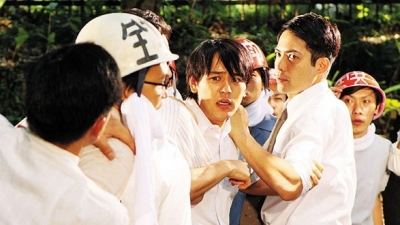
Nobuhiro Yamashita’s My Back Page is the story of a young left-wing journalist in late-60s/early 70s Tokyo. Sawada (Satoshi Tsumabuki) is a familiar type: the political journo who wants to get involved. The dynamic between guilty voyeurism and direct participation is limned in a funny and poignant early sequence, which features our reporter’s undercover “infiltration” of local street life. One of the characters he befriends –somehow both duplicitously and genuinely– will appear, crucially, in the film’s devastating last scene. This scene, which takes place years after the main events of the movie, does something that classical Hollywood cinema used to do all the time: it reintroduces a forgotten story element for thematic resonance. The loss of careful, integrated plotting is one of the tragedies of contemporary American filmmaking. I see it as the literary partner to the development of “intensified continuity” [a term by David Bordwell expanding classical continuity narrative to incorporate contemporary Hollywood’s faster cutting style and overall more kinetic visuals, ed.]: they both entail sloppiness and an indifference to complex thinking. In My Back Page as in The Front Line, we can see glimpses of what mainstream cinema once was in America and often still is in other parts of the world: carefully constructed, humane, intelligent without being elitist. Here we have a 2011 redemption of one of the oldest tricks in the book: a guy from the beginning of a movie is forgotten, only to pop up at just the right moment at the end in order to spell out how much has changed. What has occurred over the course of the film is the disgraceful end of Sawada’s career and his profound humiliation –not to mention murder, arrests, imprisonment, and national scandal. Sawada is a newer, humbler, sadder man in the last scene, but he’s been able to half-forget his tragedy until he steps into just the right bar for a drink. It’s a wonderfully old-school moment. Its evocation of a loss so deep that it had been half-forgotten had a reflexive parallel for me: this sort of retrospective synchronicity is so long in the Hollywood past that I’d forgotten about its absence.
Anyway, the plot in brief: Sawado falls in with a young radical activist who goes by the handle of Umeyama (Ken’ichi Matsuyama). A combination of menace, charisma and pathetic weakness, Umeyama is just what Sawada is looking for: “real” enough to exploit for story material; intelligent and sincere (so he thinks) enough to bond with; just soft enough for the reporter to assert his prerogative when he has to. Turns out Umeyama’s not all he seems, but Sawado’s discovery of this isn’t enough for him to stop covering the militant in his plans for a strike on a military base.
The dynamics here are familiar from other movies about radical leftism: sympathetic observation vs. direct participation, the intimately personal vs. the abstractly political. This is a failure-of-the-radical-left movie, full of bittersweet resignation and rueful criticism. The sense of familiarity to a North American audience is startling for those, like me, who don’t know a lot about Japanese history; in many senses this is a movie that could have taken place in Montreal or Berkeley. The conflicts between personal and political are put across with some beautiful dialogue. In one scene, Umeyama, as he consoles and seduces a disillusioned female comrade, says “I want to change the world for you.” It’s hard to separate the b.s. from the passion in this film, although it gets easier—but never too easy—as the plot develops. Arguing ethics with his crusty superior Mr. Nakahira (a rumpled and grizzled Kanji Furutachi), Sawada hears “You’re human before you’re a journalist.” Seconds later, defending his lascivious appreciation of their publication’s young new cover girl, Nakahira says “I’m a man before I’m a journalist.” This is the type of synchronous, clever dialogue that John Sayles specializes in.
The problem with Sayles is that he’s a lousy director; Yamashita, realizing screenwriter Mukai Kosuke’s adaptation of a novel by Kawamoto Saburo, shows unobtrusive chops in working with what looks like a pretty low budget. The direction moves, with a patient and sure hand, between two poles. On the one hand, there are sparsely populated group shots that register environment plainly while maintaining an agonizing sense of personal exposure. On the other end of the scale are beautifully protracted close-ups that put across psychological shifts in the characters with the greatest sympathy one could ask for. My Back Page is the type of visually unassuming film that gets praise mainly for its writing and acting. I’m doing that myself here, but I wouldn’t want to ignore the fact of its superb montage and mise en scène.
About the acting: it’s fabulous. The leading duo of Matsuyama and Tsumabuki are a perfect mirror-image pair: Tsumabuki’s soft, boyish, almost constantly uncertain face conceals a surprising courage, while Matsuyama’s feline sternness and unwavering eyes conceal a not-as-surprising cowardice. The two superbly expressive faces validate Hitchcock’s dictum that “casting is characterization”; the locked-in expressiveness makes the agonizing reversals of the story all the more complex. Both characters are trying to create an internal consistency against daunting, self-imposed odds; this endeavour—doomed to failure, of course—is made all the more poignant by the outer consistency of their looks. What they are is hiding in plain sight, and at the film’s climax it’s revealed to them from without.
My Back Page is the type of intelligent, popular entertainment made (often poorly) by American directors like William Wyler, Robert Rossen, Elia Kazan and, later on, Sydney Lumet and Pollack. If I keep evoking American movies here, it’s partially because of my personal experience and solipsism: I just haven’t seen enough stylistically unassuming, popular Japanese films. I tend to associate popular filmmaking with America and, secondarily, Hong Kong. It’s also because, as I’ve said, the political context is so familiar to me as a Westerner raised on the lore of the Sixties generation. This is a movie that could have a lot of North American baby boomers crying into their popcorn –if only more than a few hundred of them had a chance to see it.
As a cinephile I tend to dubiously associate “foreign” filmmaking with art cinema, an error that I share with many. Movies like The Front Line and My Back Page are a useful corrective to that mindset, and the fact that they’re largely confined to festivals like VIFF is a damn shame. I can understand, if not like, the fact that filmmakers like Abbas Kiarostami and Béla Tarr are culturally marginal in North America. But it drives me nuts that great popular movies like these two are missing the audience of millions that they could move. Complaints about the lousy quality of today’s movies are mostly based on ignorance and laziness; every year there are dozens of masterful films being shown in theatres. You just have to take a global perspective to see that, which is often a matter of fortune as much as inclination. I’m a lucky man: one of the best global vantage points in the world comes into being once a year, for two and a half weeks, in my hometown.



